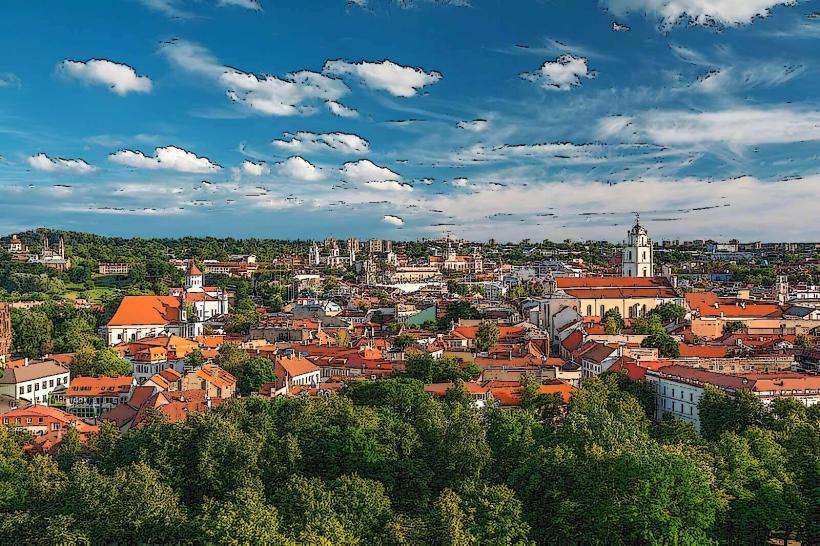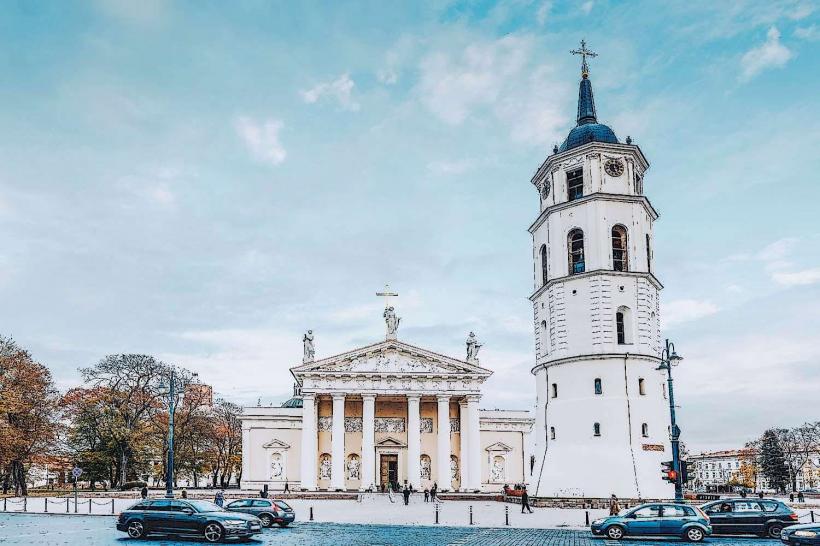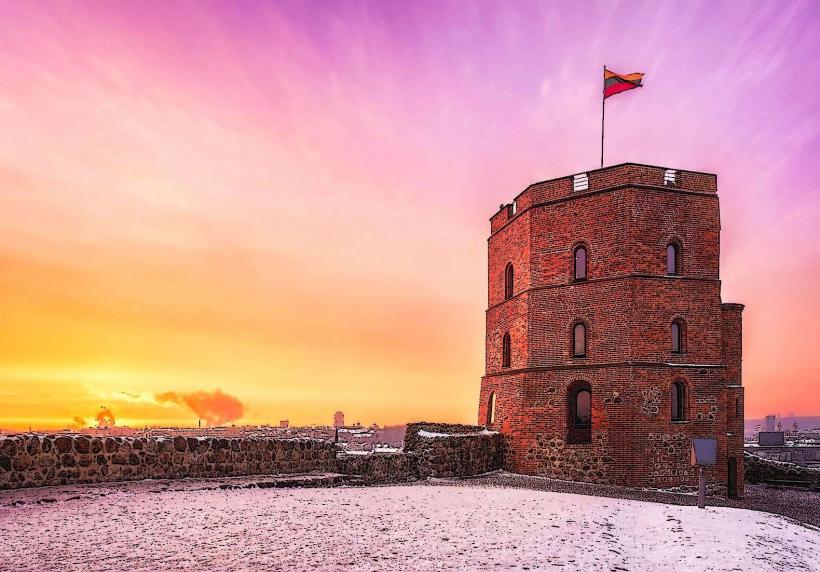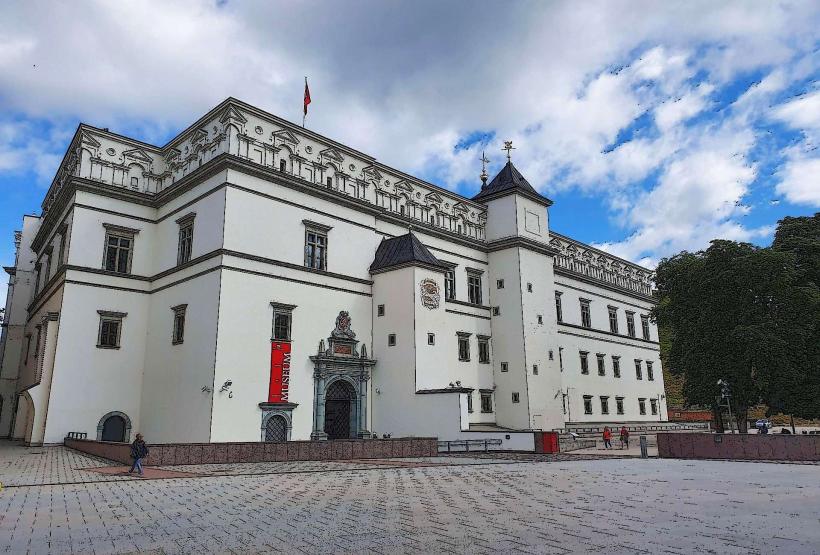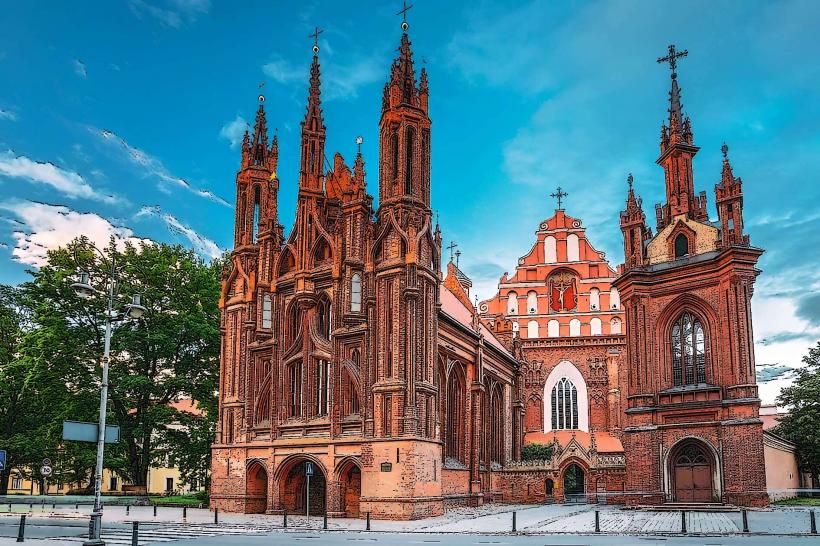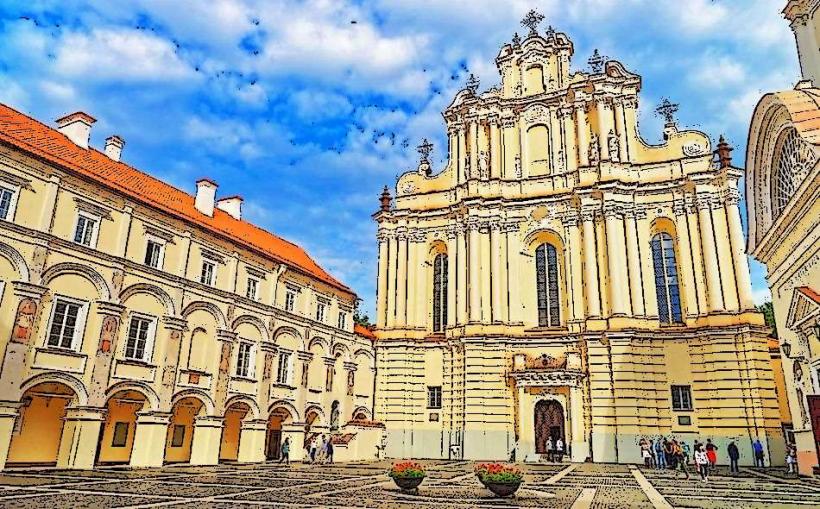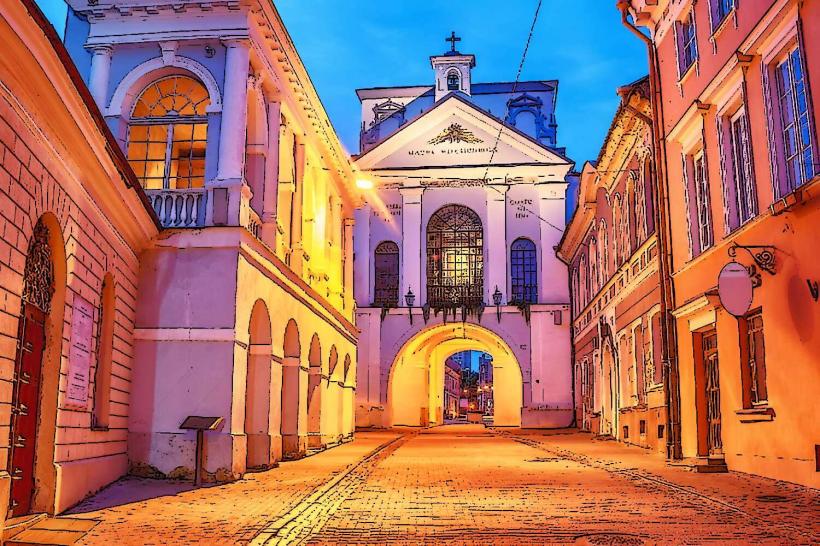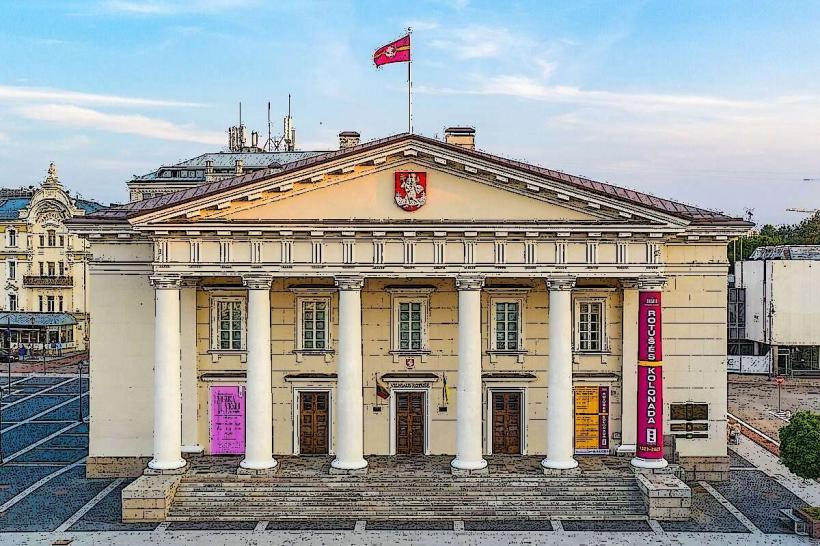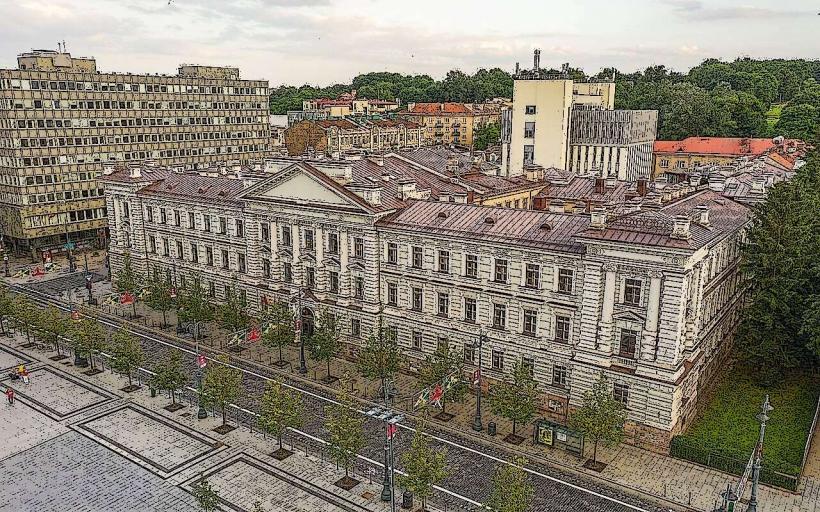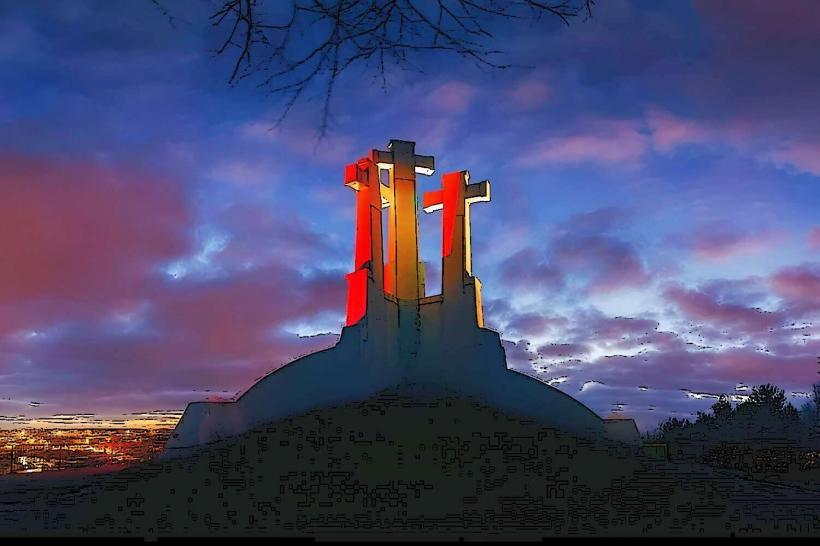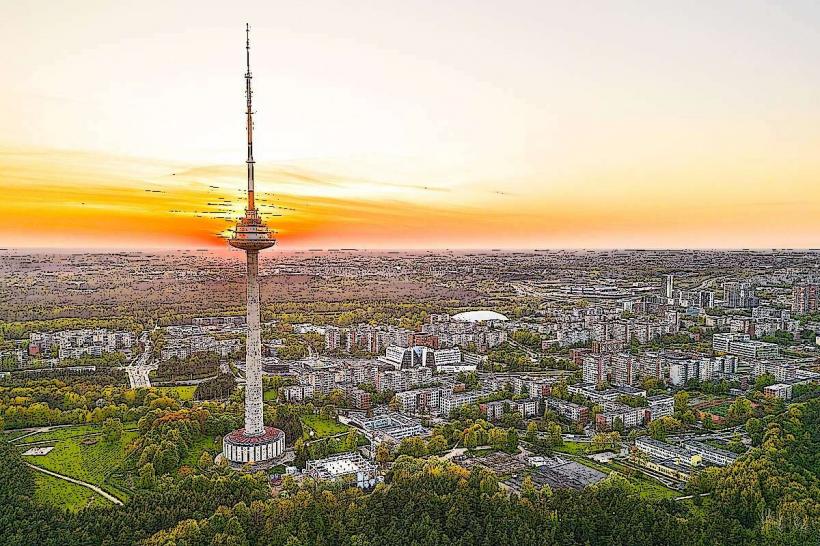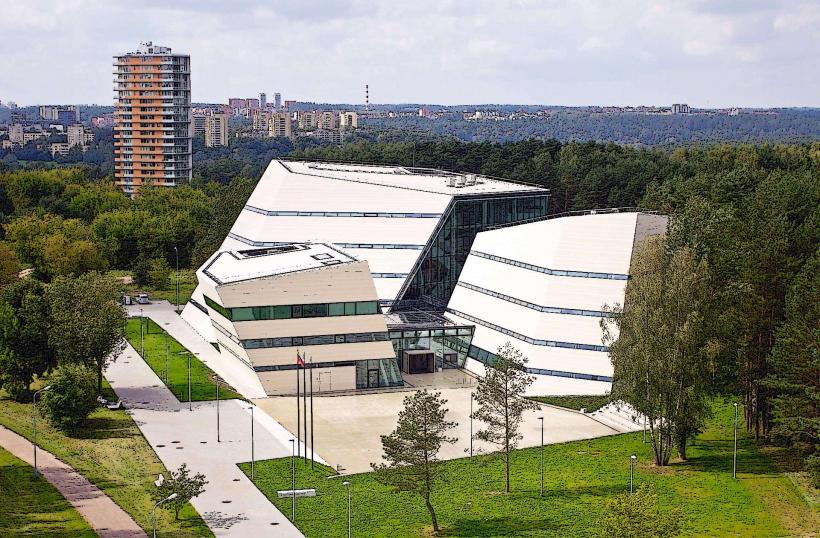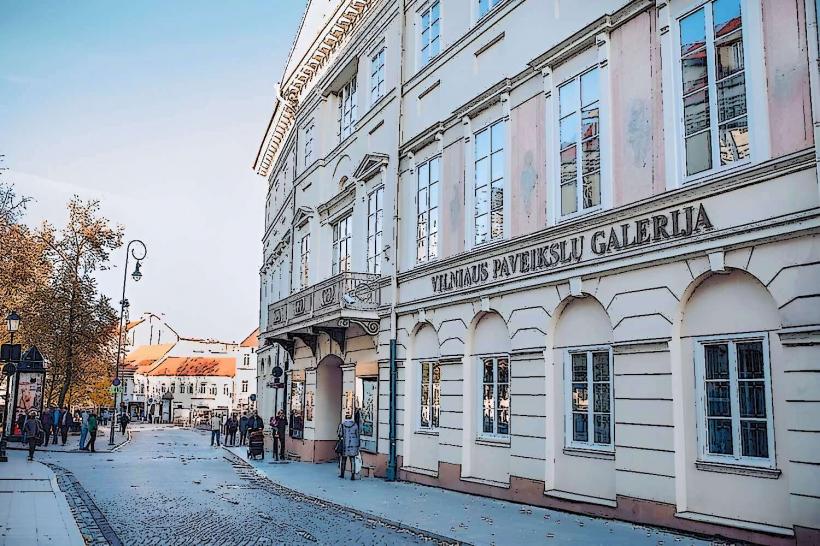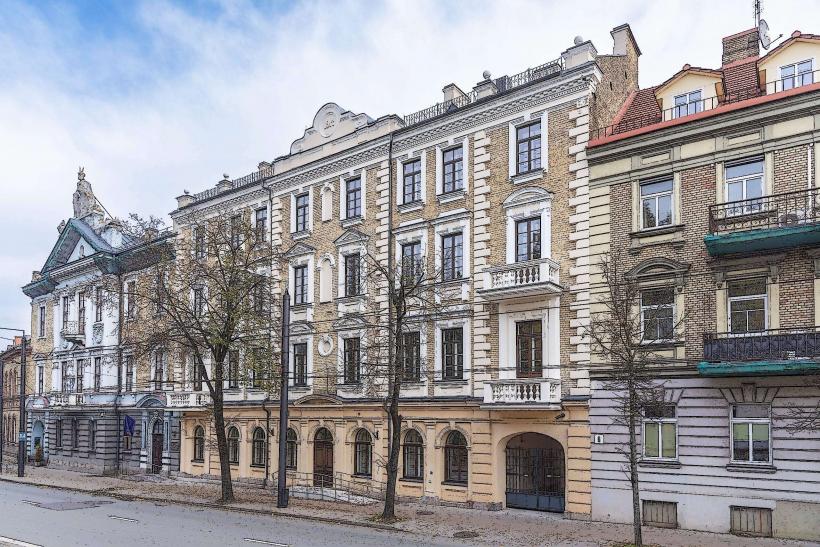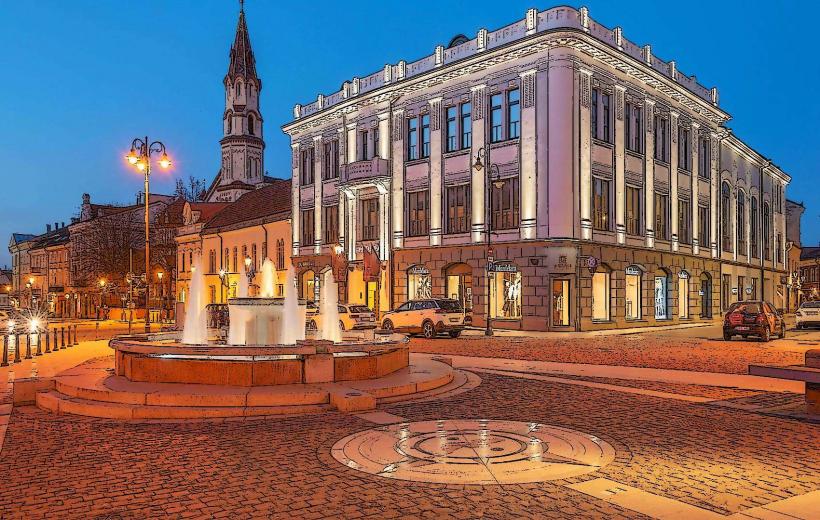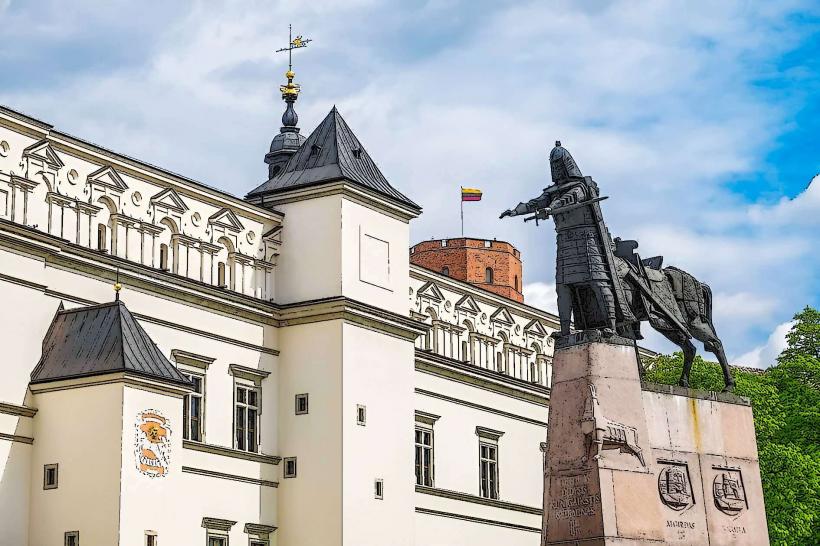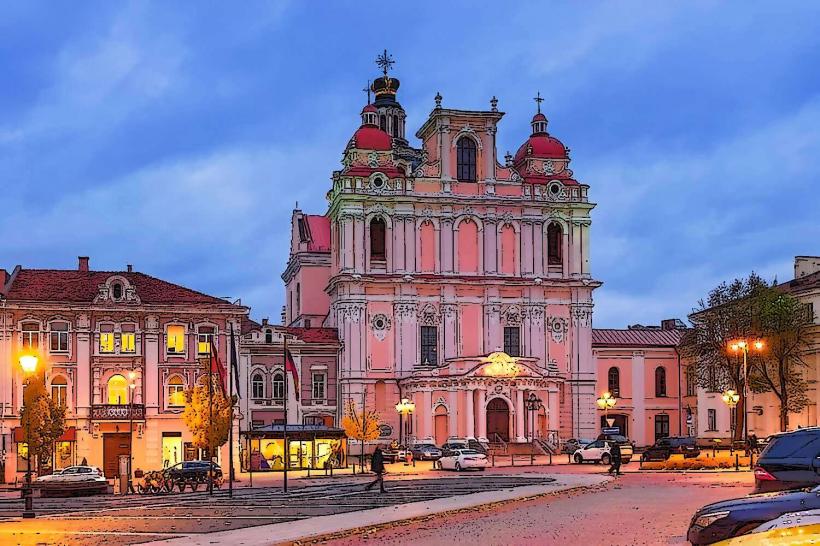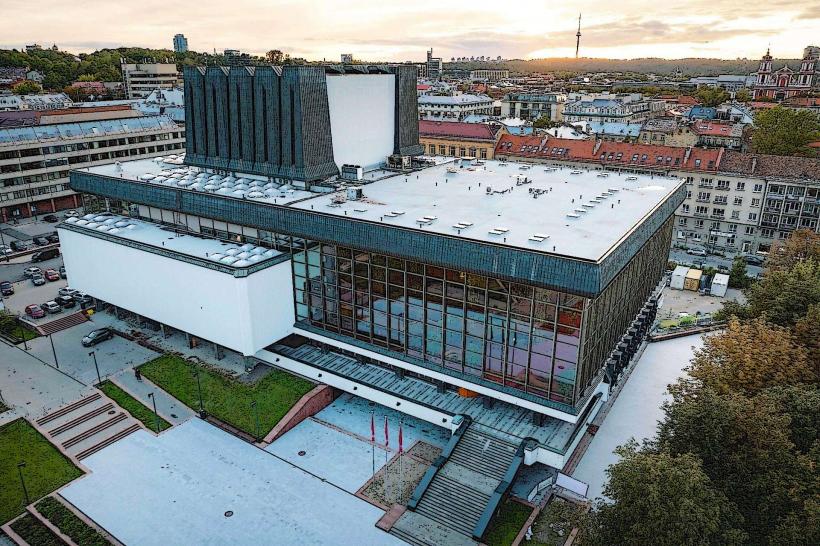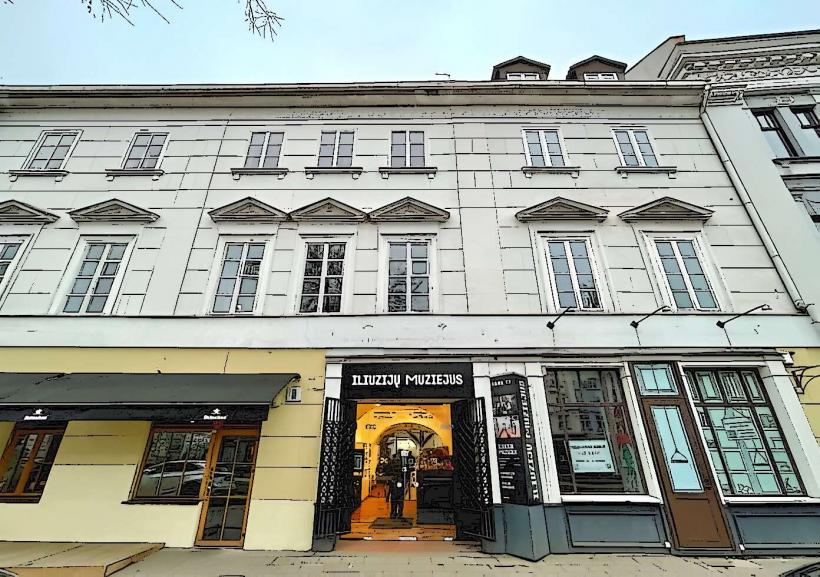Information
Landmark: Church of St. Peter and St. PaulCity: Vilnius
Country: Lithuania
Continent: Europe
Church of St. Peter and St. Paul (Šv. apaštalų Petro ir Pauliaus bažnyčia)
The Church of St. Peter and St. Paul is one of the most stunning baroque churches in Vilnius, Lithuania, and is renowned for its exceptional architectural beauty and ornate interior. Located in the Old Town of Vilnius, the church is a significant cultural and religious landmark that attracts both pilgrims and tourists alike due to its intricate details and historical significance.
Historical Background
Construction and Origins: The Church of St. Peter and St. Paul was built between 1668 and 1701. It was commissioned by Grand Duke of Lithuania John II Casimir in response to the Catholic Counter-Reformation's push to strengthen the presence of Catholicism in Lithuania. The church was designed to be a Jesuit church and was intended to symbolize the triumph of Catholicism over Protestantism in the region.
Architectural Design: The church was designed by the Italian architect Giovanni Maria Galli, with some involvement from other architects such as Pietro Perti and Paulus Szydłowski. It is an exemplary example of Baroque architecture in Lithuania, featuring elaborate decoration, and a design that combines Italian and Lithuanian elements.
Interior and Artistic Significance: The church's interior is considered one of the most magnificent in Lithuania, featuring over 2,000 stucco figures, created by Italian sculptor Giovanni Maria Galli and his team. The decoration is rich with religious symbolism, and many of the figures represent saints, angels, and scenes from the Bible. The altars, frescoes, and paintings are also notable for their intricate detail, making the church an artistic masterpiece.
Architectural Features
Exterior: The church’s façade is relatively simple compared to the grandeur of its interior. It has a Baroque style, with twin towers flanking the main entrance. The exterior is characterized by curved lines, typical of the Baroque era, creating a sense of dynamism and movement.
Interior: Upon entering, visitors are immediately struck by the overwhelming beauty and opulence of the church. The interior is decorated in the Baroque style with ornate stucco work, frescoes, and paintings. The most striking feature is the stucco figures that cover the walls and ceiling. These figures were created by Italian sculptors and are symbolic of the Catholic faith, depicting various saints, angels, and biblical scenes.
Altar and Ceiling: The church’s high altar is an exquisite example of Baroque artistry. The altar is dedicated to St. Peter and St. Paul and is surrounded by rich, golden stucco decorations. The ceiling frescoes, painted by Michelangelo Palloni, depict scenes from the lives of St. Peter and St. Paul, and the vaulting and domes are decorated with rich paintings and ornamental stuccoes.
Stucco Figures and Decorations: The church’s most notable feature is its stucco decorations. Over 2,000 stucco figures adorn the interior, created by a team of Italian sculptors. These figures represent a range of religious figures, including angels, apostles, and biblical scenes. The intricate detail of these figures creates a visual narrative of the Church’s spiritual mission and highlights the Baroque era’s emphasis on grandeur and ornate beauty.
Chapel of St. Casimir: The church also contains a chapel dedicated to St. Casimir, the patron saint of Lithuania. The chapel features an altar and paintings that honor the life and legacy of St. Casimir, one of Lithuania’s most important religious figures.
Crypt and Tombs: Beneath the church lies a crypt, which holds the tombs of several notable figures, including members of the Lithuanian nobility and clergy. The church is a site of spiritual importance, particularly for those with ties to the Catholic faith in Lithuania.
Religious and Cultural Importance
Catholic Significance: The Church of St. Peter and St. Paul serves as an important center for the Catholic community in Vilnius. It has been a site for religious ceremonies, including masses, weddings, and funerals for centuries. Its beauty and historical connection to the Jesuit order make it a revered place of worship.
Historical Role: As one of the most important religious buildings in Vilnius, the church has played a significant role in the spiritual and cultural history of the city. It was also a symbol of the Catholic Counter-Reformation, designed to reinforce Catholic dominance in Lithuania during the period when the country was under Polish-Lithuanian Commonwealth rule.
Cultural Heritage: The church is not only a religious site but also a major cultural monument. It is a significant piece of Lithuanian heritage, representing the intersection of Catholicism, Baroque architecture, and Lithuanian identity. The church's artistic and architectural features reflect the influence of Italian Baroque art and the role of the Jesuit order in shaping Lithuania's cultural landscape.
Visitor Experience
Visiting the Church: The Church of St. Peter and St. Paul is open to the public, and visitors are welcome to explore its breathtaking interior. The church is especially popular among those interested in Baroque architecture, religious art, and Lithuanian history. The peaceful and awe-inspiring atmosphere inside offers a sense of spiritual serenity, making it a place for both reflection and admiration of its artistic beauty.
Guided Tours: Visitors can take guided tours to learn more about the history, art, and symbolism of the church. These tours provide deeper insights into the church’s architectural design, its spiritual significance, and its role in Lithuanian religious history.
Photography: The church’s stunning interior makes it a favorite spot for photographers. Visitors are encouraged to capture the intricate stucco figures, paintings, and the overall grandeur of the space.
Events and Services: In addition to regular masses, the church also hosts cultural events, including concerts and religious celebrations. The church's acoustics and beautiful interior provide an exceptional setting for classical music performances and sacred music concerts.
Conclusion
The Church of St. Peter and St. Paul is a masterpiece of Baroque architecture and one of the most important landmarks in Vilnius. Its stunning interior, filled with intricate stucco work, frescoes, and religious symbolism, makes it a must-visit for those interested in art, history, and religious heritage. The church not only reflects the artistic achievements of the Baroque period but also serves as a symbol of Catholic faith in Lithuania, offering both spiritual reflection and cultural enrichment to all who visit.

